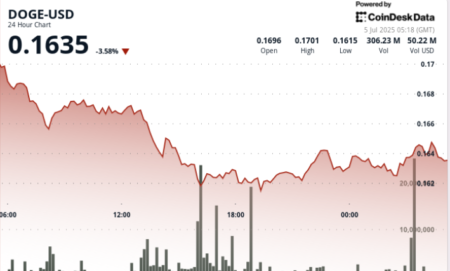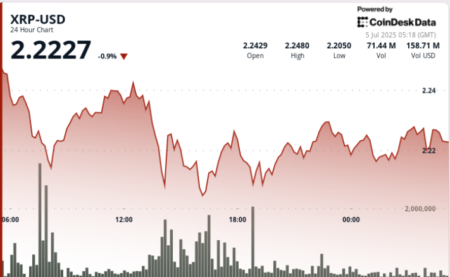Bitcoin Mining Dynamics: A Look at June’s Production Trends
In June, Bitcoin miners faced significant challenges due to power curtailments in Texas, prompting many companies to reduce their output. Major players like Riot Platforms, Cipher Mining, and Marathon Digital experienced notable drops in Bitcoin (BTC) production as they strategically scaled back operations to support grid stability during peak summer demand. However, amidst this industry-wide slowdown, CleanSpark emerged as a standout performer, achieving increased Bitcoin production and surpassing an impressive 20 EH/s (exahashes per second) in hashrate growth.
Production Slowdown Amid Power Challenges
Riot Platforms reported a 12% decrease in June production, mining 450 BTC compared to 514 BTC in May. The company strategically reduced its operations to conform to the Electric Reliability Council of Texas (ERCOT) during high-demand periods. CEO Jason Les explained that the firm’s approach contributed significantly to grid stability while also enhancing their competitive position. As a part of this strategy, Riot sold 397 BTC for an impressive $41.7 million, ending June with a total of 19,273 BTC in reserve.
Strategic Curtailments Impacting Performance
Similarly, Cipher Mining and Marathon Digital (MARA) also scaled down their operations in June. Cipher Mining mined a total of 160 BTC, selling 58 and maintaining a reserve of 1,063 BTC. The company credited its decline in production to a "proactive 4CP avoidance strategy," which aimed to sidestep penalties linked to peak energy usage, while keeping power costs remarkably low. On the other hand, MARA faced a significant 25% drop, resulting in the mining of just 211 BTC compared to 282 BTC in May due to weather-driven curtailments and reliance on older machines.
CleanSpark: Defying the Odds
In stark contrast to its competitors, CleanSpark defied the broader industry trends by increasing Bitcoin production by 6.7% in June, successfully mining 445 BTC while limiting sales to just 8 BTC. The company’s strategic focus on operational efficiency enabled it to exceed its mid-year goal, achieving a hashrate of over 20 EH/s—more than double what it had achieved in December. CEO Zach Bradford credited this growth to the team’s dedication and strategic planning, showcasing how a focused approach can yield positive results even in challenging environments.
Future Growth and Expansion Plans
As the landscape of Bitcoin mining continues to evolve, CleanSpark is not resting on its laurels. The company is strategically expanding its operations with plans for new projects in Wyoming and Tennessee, aimed at pushing towards an ambitious target of achieving 50 EH/s in hashrate. Such expansions indicate CleanSpark’s commitment to growth and the exploration of new frontiers in Bitcoin mining, potentially positioning it for even greater successes in the future.
Conclusion
The Bitcoin mining sector may have experienced a temporary slowdown due to power curtailments in Texas, but the resilience shown by companies like CleanSpark stands out amidst the challenging conditions. While other major miners reduced their output, CleanSpark’s strategic decision to enhance production reflects its commitment to both growth and efficiency. As Bitcoin mining continues to face fluctuations in demand and operational challenges, the strategies adopted by these companies will be critical in navigating the future landscape of the industry. For investors and industry watchers, CleanSpark’s performance could serve as a beacon of innovative practices that prioritize both profitability and sustainability in the dynamic world of cryptocurrency mining.

















